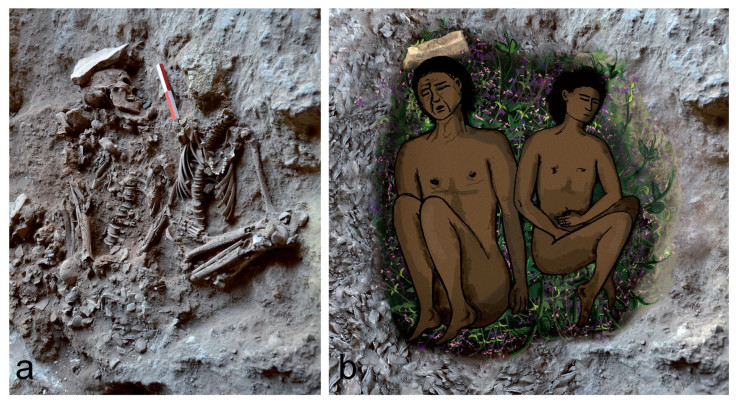Floral Finale: When Did Humans Start Putting Flowers On Graves?

Adorning a grave or casket with flowers is a symbolic gesture with a near universal ability to conjure emotion and sympathy across cultures. But where and when did people start this tradition?
Israeli archaeologists have unearthed the earliest known graves with decorative flowers, according to the study that was published today in PNAS.
The burial ground is located in Raqefat Cave, about 17 miles southeast of the Mediterranenan coastal city of Haifa. Carbon dating revealed that the graves in question were between 11,700 and 13,700 years old.
The scientists observed impressions from a variety of plants, including mint and Judean sage. Based on the size and shape of the stems, they estimated many were plucked sometime before midsummer, when their scents would have been most fragrant.
Careful preparation went into the creation of each burial spot, with soft mud used to line to bottom, which was then covered by a layer of flowers.
Double burials — interments with two corpses — were common, and in fact, the grave with the most flowers contained a 12- to 15-year-old adolescent with a 30-year-old. A dual grave signals a simultaneous death, raising questions over the cause of death. Did some disease epidemic strike the region or were these two the victims of an unfortunate accident?
Both bodies were arranged in a crouched or "flexed" position, which is a common feature in ancient burial grounds.
Twenty-nine skeletons, all within a 160 square-foot area, were found. The discovery might also represent one of the earliest examples of a cemetery, as evidence points to the site being used over several generations.
"The dates [of the collected bones] indicate that the site was used for burial, repeatedly, in the same confined area and with the same customs and grave preparation, likely for as long as about 2,000 y," wrote the authors, who were led by Dani Nadel, a professor at the University of Haifa's Zinman Institute of Archaeology.
Source: Nadel D, Danin A, Power RC, et al. Earliest floral grave lining from 13,700-11,700-y-old Natufian burials at Raqefet Cave, Mt. Carmel, Israel. PNAS. 2013.



























